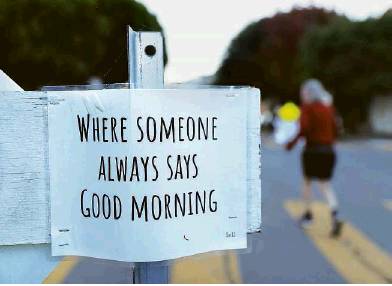Making city streets work for everyone
Report: Expand on pandemic-era innovations
By John King
When Bay Area residents sheltered in place last year to escape the ravages of COVID-19, city streets that could offer room for people to walk or bicycle in safety close to home became essential public resources.
Putting roadways to use as safety valves is no longer as urgent, thanks to vaccines and better knowledge about how the corona-virus is transmitted. But such innovations should not be curtailed, argues a new report by one of the region’s largest planning advocacy groups. Just the opposite, in fact.
“We have the opportunity to create an expandable network of streets and spaces that builds on what we’ve learned,” said Laura Shipman, community planning policy director for SPUR, a public policy think tank. “How to grow it incrementally, but also how it can be applied more equitably.”
The new report, “Temporary to Transformative,” makes the case that such 2020 innovations as closing residential streets to non-local traffic, or allowing cafes to convert parking spaces into seating alcoves, offer a template for viewing the urban street network in a more holistic way. Instead of reserving asphalt for automobiles, streets in some locations can play much broader roles.
Among the recommendations are that “slow streets,” which were implemented in different neighborhoods by the San Francisco Municipal Transportation Agency, should be expanded with an eye to “creating safe, car-free corridors for cyclists, public transit and other sustainable modes to travel quickly across the city.”
As for parklets, which now are plentiful in many commercial districts, SPUR urges city agencies to build and maintain such “shared spaces ... as a part of the city’s overall open-space network.” Parked cars could make way for platforms devoted to play areas, the report suggests, or planters with public benches or even a set of swings.
“The reaction we get is, ‘We needed this and now we really like it.’ ”
Leah Chambers, urban designer who helped write the report
“A lot of what we’re trying to do is build the case for why it’s important to do something bigger,” said Kristen Hall, an urban designer who worked with SPUR on the 40-page report. “If these are truly an extension of the public realm, some need to be public.”
Another emphasis is the idea of streets as “an equitable civic asset” — so that parklets and multi-use roadways are found throughout San Francisco, not only in affluent neighborhoods or retail strips. This could involve targeted city subsidies, or readjusting road improvement budgets, so that more money goes to neighborhoods that have been neglected in the past.
Yet for all the calls “to reexamine how our streets serve us,” the report acknowledges another lesson of the pandemic: taking small steps toward a common goal can be more fruitful than crafting grand plans that get bogged down in controversies.
“At this stage, it’s all about iteration,” said Leah Chambers, another urban designer who helped write the report. “It’s a different way of thinking.”
The report was crafted over a period of months, long enough that some of what it calls for already exists. The city’s current “shared spaces” effort is accompanied by grants of up to $2,500 for merchants or community groups in areas found to have “a higher density of vulnerable populations,” such as Bayview or the Tenderloin. Some “Slow Streets,” like Sanchez Street in Noe Valley, are now considered permanent.
The flip side is that — unlike long stretches of 2020 and early 2021 when everything from bar stools to indoor gyms were off-limits — public streets no longer are one of the few options for recreation or socializing. The blocks of Sanchez below 24th Street still attract late-afternoon strollers, some of whom pause to look at the art and community notices that now adorn traffic barriers, but the numbers are far below what they would have been before vaccines were approved.
Berkeley, meanwhile, has put its own “healthy streets” on hold, saying lessons learned from the traffic-calming effort will be folded into the next update of the city’s bicycle plan.
As fluid as things might be, San Francisco officials welcome an outside group weighing in on its efforts.
“We’re glad that SPUR wanted to take a look,” said Robin Abad Ocubillo, who manages the Shared Spaces program and took part in a task force that offered comments along the way. “San Franciscans have discovered a real appetite for being together in outdoor spaces” that aren’t conventional plazas or parks.
The authors of “Temporary to Transformative” see their report as another example of iteration, another small step.
“The reaction we get is, ‘We needed this, and now we really like it,’ ” Chambers said, referring to residents pushing to keep a broader vision of how streets and sidewalks can serve the public at large. “They don’t want to lose that.”
John King is The San Francisco Chronicle’s urban design critic. Email: jking@sfchronicle.com Twitter: @johnkingsfchron


